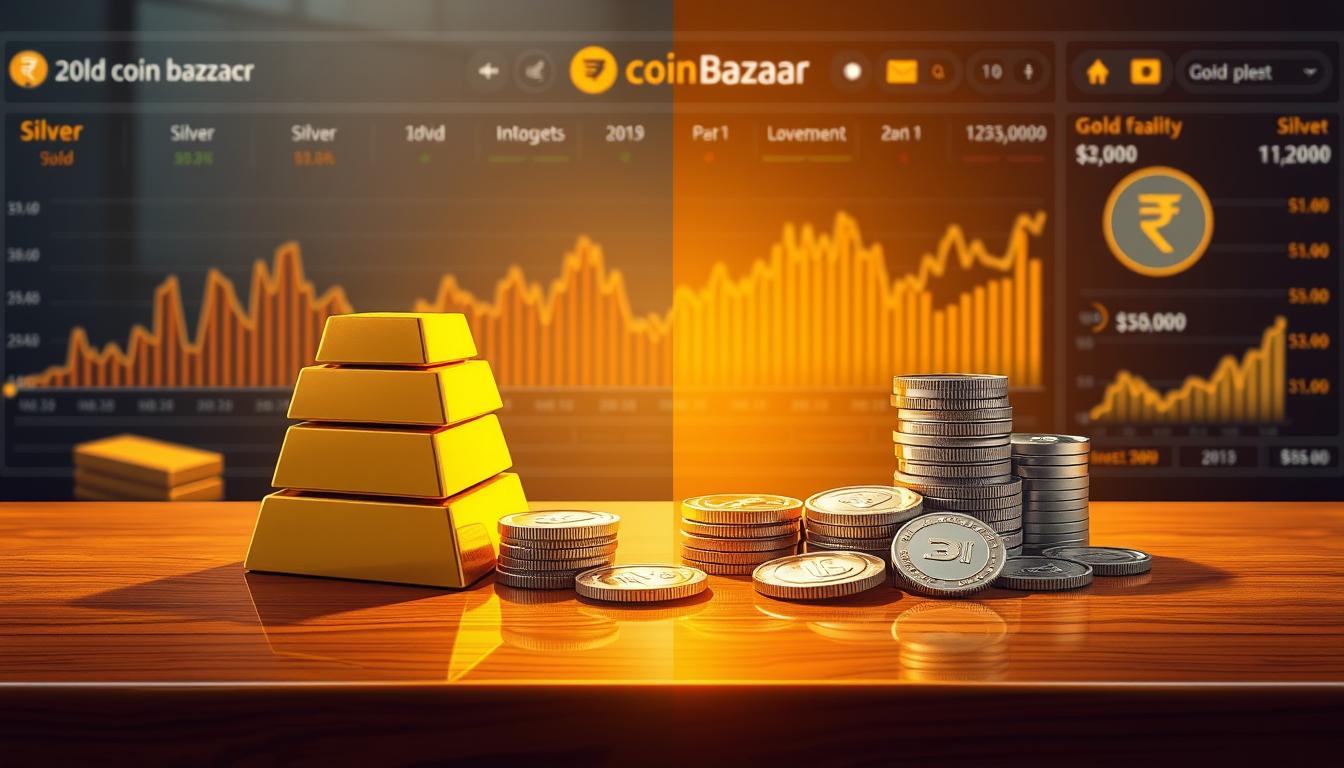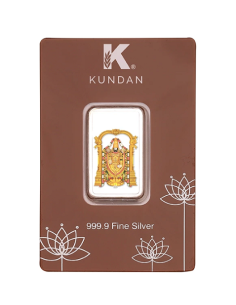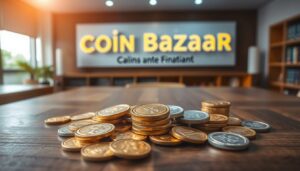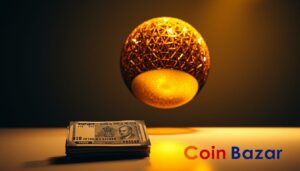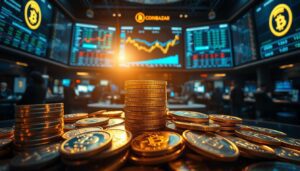Exclusive Deals & Trending Items
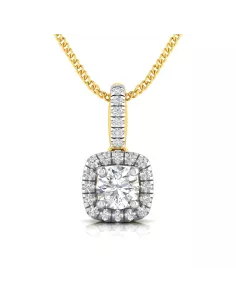

Divine Solitaires Diamond Pendant for Women 18kt Gold Sol. Diamond 0.10 carats BIS Hallmark Certified
Shop Now

Muthoot Pappachan Swarnavarsham Gold Hallmarked Rose Coin of 2 gms in 22 KT 916 Purity Fineness
Shop NowWhen thinking about precious metals for investment, you might be comparing silver and gold. In India, these metals hold special places in culture and tradition. Gold is often linked with wealth and safety. Silver, on the other hand, is prized for its beauty and uses in industry.
Looking to 2025, the big question is: which metal will give better returns? This is key for those looking to spread out their investments. By looking at current trends and future outlooks, you can make smarter choices for your money.
Key Takeaways
- Understanding the cultural significance of gold and silver in India.
- Recognizing the unique qualities of each precious metal.
- Comparing the investment potential of gold and silver in 2025.
- Identifying the factors that influence the returns on precious metals.
- Making informed decisions about diversifying your investment portfolio.
The Enduring Appeal of Precious Metals
Precious metals have been important in human societies for centuries. They are not just for decoration but also as a safe investment. When the economy is shaky, people often choose these metals as a safe place to put their money. But why do they keep coming back?
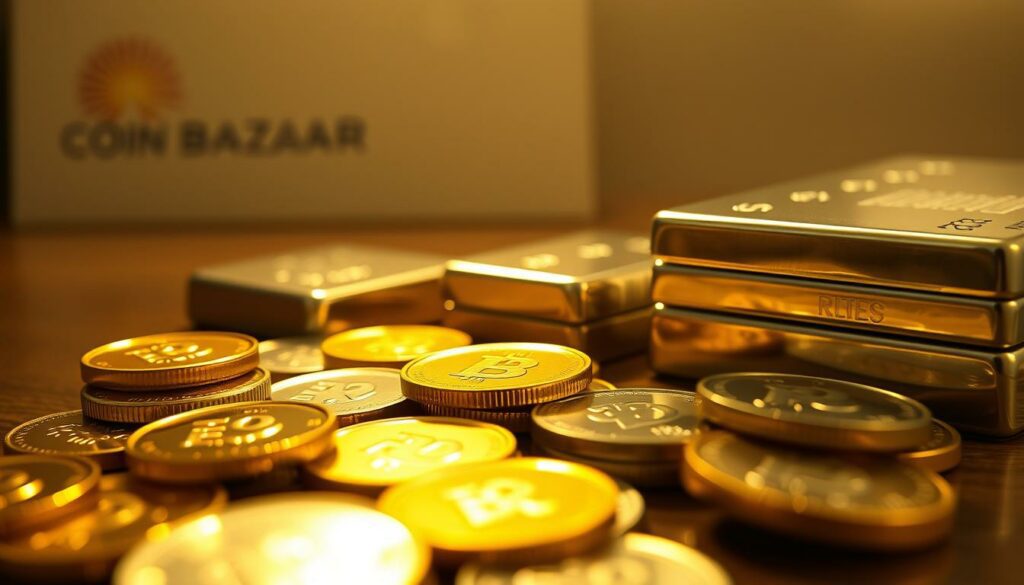

Historical Significance as Stores of Value
Gold and silver have been used for ages as money and wealth. Gold, in particular, has been minted into coins and used for jewelry, symbolizing power and wealth. These metals are not just culturally significant; they also hold economic value. They have backed currencies and are still seen as a reliable investment today.
Why Investors Turn to Precious Metals in Uncertain Times
When the economy is uncertain, investors seek safe assets. Precious metals offer liquidity, security, and potential for appreciation. Here are two main reasons why:
- They serve as a hedge against inflation.
- They provide protection against currency devaluation.
Inflation Hedging Capabilities
When inflation goes up, currency value goes down. But precious metals usually go up in value. This makes them an effective hedge against inflation, keeping your buying power steady over time.
Currency Devaluation Protection
When currencies lose value, precious metals keep theirs. They offer a safe place for investors when money values swing wildly.
Understanding why precious metals are appealing can help you make smart investment choices. They are great for fighting inflation or protecting against currency drops. These metals are a solid investment for your portfolio.
Current Market Landscape for Precious Metals in 2025
The year 2025 is full of challenges and chances for investors in precious metals. Global economic trends and geopolitical events shape the market. Knowing the current scene is key for smart choices.
Global Economic Factors Influencing Precious Metal Prices
Global economic factors greatly affect precious metal prices. Interest rates, inflation, and currency changes are important. For example, low interest rates and high inflation make gold more appealing as a safe investment.
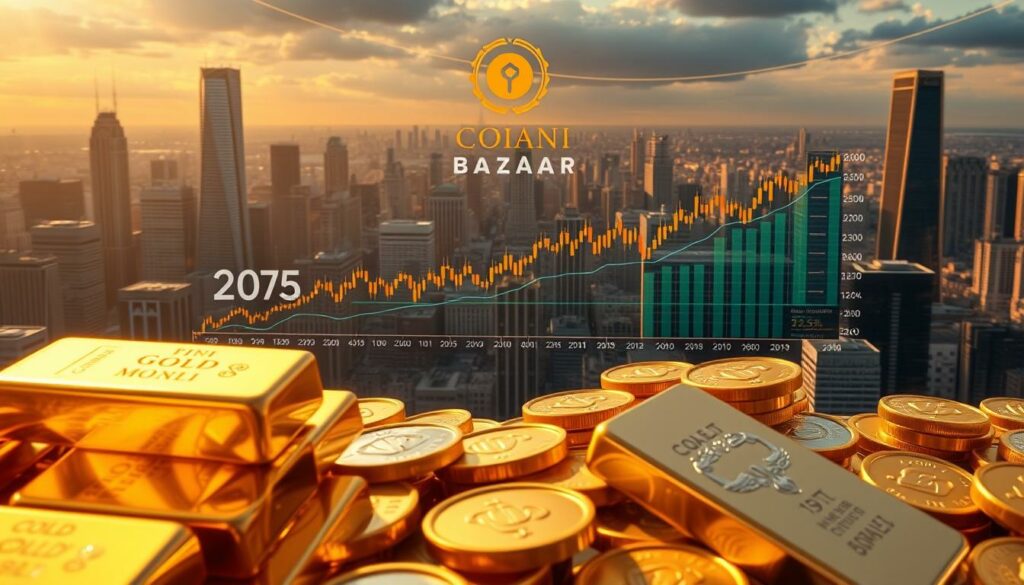

The Impact of Geopolitical Tensions on Safe-Haven Assets
Geopolitical tensions greatly affect the demand for safe assets like gold and silver. Escalating conflicts and trade wars lead to market volatility. This pushes investors towards precious metals, increasing prices.
Post-Pandemic Recovery Effects on Commodity Markets
The post-pandemic recovery has changed commodity markets, including precious metals. As economies grow, demand for industrial commodities like silver rises. Supply chain issues and mining levels also shape the market.
Grasping these points is vital for understanding market trends. It helps in making wise investment choices in precious metals.
Gold: The Traditional Safe Haven
Gold has always been seen as a safe investment. Its appeal remains strong in 2025. Investors are drawn to gold for its history and ability to protect against economic uncertainty.
Historical Performance of Gold as an Investment
Gold’s value as an investment comes from its past success. It has been a reliable value store, especially in tough economic times.
Key Price Milestones Over the Past Decade
Let’s look at gold’s price milestones from the last decade. This helps us understand its performance better.
| Year | Average Price (USD/oz) | Significant Events |
|---|---|---|
| 2015 | 1160 | Global economic slowdown |
| 2016 | 1250 | US presidential election |
| 2020 | 1800 | COVID-19 pandemic |
| 2025 | 2000 (est.) | Projected due to economic recovery |
Gold’s Role in Portfolio Diversification
Adding gold to your portfolio can balance out market swings. Gold’s low correlation with other assets makes it a great diversifier.
In 2008, gold prices went up as investors looked for safe places. This shows gold’s role in reducing risk.
Central Bank Gold Reserves and Market Impact
Central banks worldwide hold a lot of gold. Their buying and selling can change gold prices. It’s key for investors to watch these actions.
By 2025, central banks are still adding to their gold reserves. This keeps gold as a trusted asset.
Silver: The Industrial Precious Metal
Silver is unique among precious metals. It’s not just for investment; it’s also used in industry. This makes silver different from gold, which is mainly valued for investment.
Silver’s Dual Role as Investment and Industrial Commodity
Silver is in high demand for both investment and industry. As an investment, it’s seen as a safe value and a hedge against inflation, like gold. But its uses in industry are much broader, thanks to its electrical conductivity, malleability, and antimicrobial properties.
The demand for silver in electronics and solar energy is huge. It’s used in photovoltaic cells, electrical contacts, and switches. The rise of renewable energy and electric vehicles has boosted silver’s importance even more.
Historical Price Volatility of Silver
Silver’s price has always been more volatile than gold. This is because its demand comes from both investment and industry. The smaller size of the silver market makes price swings more noticeable.
Understanding Silver’s Price Swings
Several things affect silver’s price:
- Supply and demand imbalances
- Investment demand changes
- Industrial production trends
- Currency movements and economic indicators
Supply Constraints and Mining Production
Silver is often mined as a by-product of copper, lead, and zinc. This means its supply is tied to the demand for these metals. Lately, silver supply has faced challenges due to mine closures and lower ore grades.
For investors, understanding silver’s supply and demand is key. Its price can offer both chances and risks.
Silver vs Gold: A Direct Comparison
Silver and gold are top picks in precious metals, but they differ in key ways. These differences affect your investment choices. Let’s look at what makes each metal unique.
Price Ratio Analysis: The Gold-to-Silver Ratio
The gold-to-silver ratio shows how many silver ounces you can buy with one gold ounce. This ratio has changed over time, showing silver’s value compared to gold. Today, it’s about 80:1, so one gold ounce buys 80 silver ounces. Knowing this ratio helps you decide when to invest in each metal.
Volatility Comparison
Silver’s price moves more than gold’s, thanks to its use in industry and as an investment. This means silver’s price can swing a lot. While it might offer bigger gains, it also comes with bigger risks. Gold, however, is often seen as a safer choice.
Liquidity Considerations
Both gold and silver are liquid assets, but gold is slightly more liquid. Its higher value and wide acceptance make it easier to sell. Silver, with its lower price, is more affordable for many investors. Think about your liquidity needs when choosing between them.
Storage Requirements and Costs
Storing gold and silver safely is crucial. Both need secure storage to avoid theft and damage. Storage costs vary, with larger amounts like gold often being cheaper per ounce. Remember these costs when looking at your investment’s total return.
In summary, comparing silver and gold involves looking at the gold-to-silver ratio, price swings, liquidity, and storage costs. Understanding these aspects helps you make a choice that fits your investment goals and risk level.
Investment Methods in the Indian Market
In India, you can invest in gold and silver in many ways. Each method has its own benefits and things to think about. The market offers a wide range of options for investing in precious metals.
Physical Ownership Options Available in India
Buying gold and silver in person is a common choice in India. You can get coins, bars, and jewelry from approved dealers and banks.
Sovereign Gold Bonds vs Silver Coins
Sovereign Gold Bonds (SGBs) are backed by the government. They are safer than physical gold. Silver coins, on the other hand, are something you can hold and store. “SGBs are a good way to invest in gold without keeping it physically,” says a financial expert. But, it’s important to know the risks and benefits of each.
Digital Gold and Silver Platforms
Digital platforms have changed how we invest in precious metals. You can buy, sell, and store gold and silver online. These platforms offer good prices and safe storage. They are popular with investors who like convenience.
Commodity Futures Trading on Indian Exchanges
For those who are more experienced, trading in gold and silver futures on exchanges like the Multi Commodity Exchange (MCX) is an option. This involves trading contracts for future delivery. It lets you speculate on price changes. But, it’s risky and needs a good understanding of the market.
In summary, India offers many ways to invest in gold and silver. From owning physical assets to using digital platforms and trading futures. Each method has its own pros and cons. It’s key to pick the one that fits your investment goals and how much risk you can take.
Jewelry Considerations: Beyond Investment Value
Jewelry made from precious metals like gold and silver is highly valued. It’s not just beautiful but also has long-term value. When choosing jewelry, think about its role as a wealth store and its impact on your investments.
Gold Jewelry as a Traditional Store of Wealth in India
In India, gold jewelry is a traditional wealth keeper for generations. It’s more than a pretty accessory; it’s a sign of prosperity and luck. Gold jewelry is often kept in families, passed down through the years.
When you buy gold jewelry, you’re not just getting something to wear. You’re investing in a valuable asset that can be sold when needed.
Silver Jewelry’s Growing Appeal
Silver jewelry is becoming more popular in India, alongside gold. It’s a more affordable choice without losing style or elegance. Silver’s versatility allows for detailed designs that attract younger people.
Looking at silver jewelry means considering its current price and its potential to increase in value. It’s also seen as a modern choice, perfect for daily wear.
Making and Wastage Charges: Impact on Investment Returns
When buying jewelry, remember the making and wastage charges. These costs can affect your investment’s overall value. Making charges are for the jeweler’s work, while wastage covers metal loss during making.
To get the best investment, compare these charges from different jewelers. Some might offer better rates. Knowing these costs helps you make a choice that fits your investment goals.
Industrial Applications and Future Demand Drivers
In today’s economy, gold and silver are key in many industrial uses. They are not just for investing. Their roles go beyond finance.
Gold’s Limited but Valuable Industrial Uses
Gold is great for high-tech because it conducts well and doesn’t rust. It’s used in electronics and in aerospace alloys. It’s also good for medical stuff like fillings and implants because it’s safe for the body.
Silver’s Expanding Role in Technology and Green Energy
Silver is super important in tech because it conducts electricity well. It’s used in many tech and green energy systems.
Solar Panel Demand and Silver Consumption
Solar panels need silver to work well. They turn sunlight into electricity, and silver helps a lot. As we use more solar energy, silver demand will rise.
Electronics and Medical Applications
Silver is also key in making electronics work. It’s in conductive inks and contacts. Plus, it fights germs in medical gear. This means more silver will be needed in the future.
As tech gets better, gold and silver will have more uses. This will increase demand and might change their prices. Knowing this helps investors see the value in these metals.
Cultural and Financial Significance in Indian Households
Indian families love precious metals like gold and silver. They are important for both culture and money. These metals are more than just investments; they are part of their traditions.
Gold’s Traditional Role in Indian Weddings and Ceremonies
Gold is key in Indian weddings and ceremonies. It means wealth, luck, and happiness in marriage. Giving gold jewelry at weddings is a big deal, showing a family’s wealth and support for their daughter.
Silver’s Growing Popularity in Indian Investment Portfolios
Silver is becoming more popular in India, alongside gold. It’s seen as a smart investment and an industrial material. Young investors are starting to see silver’s value, adding it to their portfolios.
Changing Attitudes Toward Precious Metals Among Young Indian Investors
Young investors in India are looking at precious metals in a new way. They use online tools and understand global markets better. They’re mixing gold and silver in their investments, blending tradition with financial savvy.
| Precious Metal | Cultural Significance | Investment Appeal |
|---|---|---|
| Gold | High; integral to weddings and ceremonies | Traditional safe-haven asset |
| Silver | Moderate; growing in investment contexts | Increasing; dual role as investment and industrial commodity |
Price Analysis and Historical Performance Trends
Market volatility is on the rise. Looking at gold and silver’s past performance can offer valuable insights. This knowledge can guide your precious metals investment choices.
Comparative Returns: Gold vs Silver (2015-2025)
Gold has often beaten silver in the long run. But silver’s industrial demand has shown it can grow fast. Let’s look at their returns from 2015 to 2025.
| Year | Gold Returns (%) | Silver Returns (%) |
|---|---|---|
| 2015 | -1.46 | -12.21 |
| 2020 | 25.14 | 47.86 |
| 2025 | 5.00 | 7.50 |
The table shows gold’s steady returns, but silver’s growth can be higher. This makes silver appealing for those seeking bigger gains.
Seasonal Price Patterns Relevant to Indian Investors
Indian investors watch for seasonal gold and silver price trends. Prices often climb during the wedding season.
Key seasonal trends include:
- Increase in demand during festival seasons
- Higher prices during the wedding season (October to December)
- Potential price drops during the summer months (April to June)
Correlation with Rupee Strength and Indian Economy
The rupee’s strength and India’s economy health also affect gold and silver prices. A weaker rupee can make these metals pricier, impacting demand.
Knowing these trends can help you make better investment choices in precious metals.
Tax and Regulatory Considerations for Indian Investors
Investing in gold and silver in India comes with tax and regulatory rules. Knowing these rules is key to making smart investment choices. This helps you reach your financial goals.
Understanding Capital Gains on Precious Metals
When you sell gold or silver, you face capital gains tax. The tax rate varies based on how long you held the investment. Short-term gains, held less than 36 months, are taxed based on your income tax slab.
Long-term gains, held over 36 months, are taxed at 20% with indexation benefits. This means your gains can grow over time.
GST Implications on Purchases
The Goods and Services Tax (GST) applies to buying gold and silver. A 3% GST is charged on making charges for gold jewelry. This can reduce your investment returns.
Knowing this can help you invest more wisely and save money.
Import Duties and Their Effect on Local Prices
Import duties on gold and silver can change their local prices. Changes in duty rates can affect the cost of these metals. This, in turn, can influence your investment returns.
For example, lower import duties can make gold and silver cheaper. This can increase demand.
| Investment Factor | Gold | Silver |
|---|---|---|
| Capital Gains Tax | Taxed as per income tax slab for short-term gains; 20% with indexation for long-term gains | Same as gold |
| GST on Making Charges | 3% GST on making charges for jewelry | Same as gold |
| Impact of Import Duties | Prices affected by changes in import duties | Same as gold |
Understanding tax and regulatory rules helps you invest wisely in gold and silver in India. It’s important to keep up with any changes in tax laws or regulations. These changes can affect your investments.
Expert Predictions for Gold and Silver in 2025-2030
Looking ahead to 2025-2030, experts share their views on gold and silver’s future. The market is shaped by many things, like the world economy, politics, and how much people need these metals.
Analyst Forecasts for Gold Prices
Gold is seen as a reliable value, with some thinking its price might go up because of global worries. “Gold remains a safe-haven asset that investors seek when the economy is shaky,” a report says.
Gold’s demand is expected to rise from central banks and investors looking to spread out their risks. A survey found, “75% of investors think gold will do better than other investments in the next five years.”
Silver Price Projections and Growth Catalysts
Silver is expected to grow a lot, thanks to its role as both an investment and an industrial material. The growing need for silver in green energy and electronics will likely increase demand.
Experts believe silver’s price will go up because of its role in green energy. “Silver’s special qualities make it key for making solar panels and other green tech,” an expert says.
Factors That Could Disrupt Current Predictions
Even with a good outlook for gold and silver, several things could change things. Political issues, changes in money policies, and shifts in what industries need could all affect prices.
As
“The future is inherently uncertain, and the precious metals market is no exception. Investors should be prepared for potential volatility driven by unforeseen events.”
This shows why it’s key to stay updated and adjust your investment plans as needed.
In summary, experts think gold and silver will do well from 2025 to 2030. This is thanks to both investment interest and industrial needs. But, investors should keep an eye on many things before making choices.
Conclusion
When looking at investment options in 2025, silver and gold stand out. They each have their own strengths and potential. Both are seen as valuable, but they meet different investment needs.
Gold is known for its stability and is often held by central banks. Silver, on the other hand, is valued for its industrial uses and can be more volatile in price.
Choosing between silver and gold depends on your investment goals and risk level. Consider the gold-to-silver ratio, how easy they are to sell, and storage needs. These factors help make a smart choice.
Having both gold and silver in your portfolio can be wise. It lets you benefit from each metal’s unique qualities. Keeping up with market trends and economic news is crucial for making good investment decisions.






